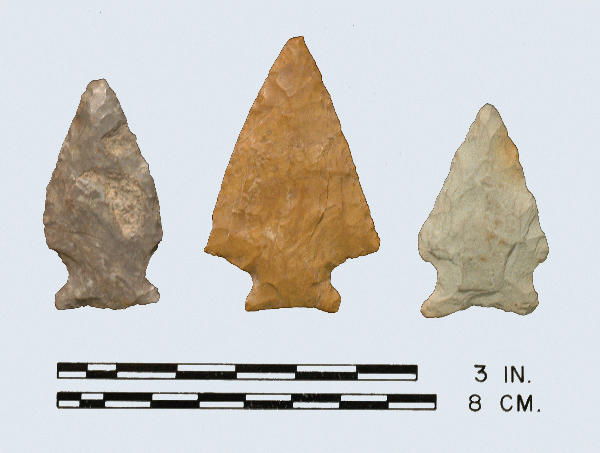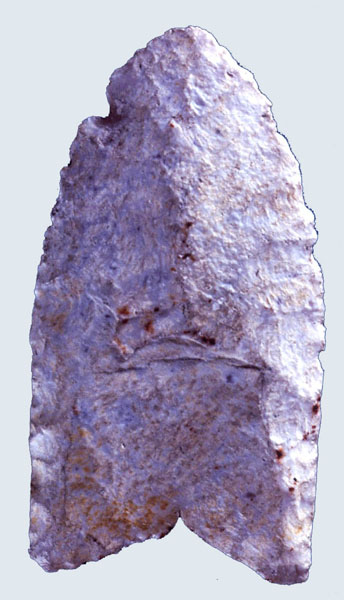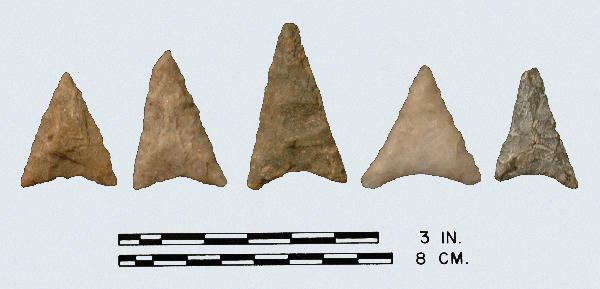
Susquehanna: chert, jasper, tuff.
Type Corner Notched Late-Archaic
Defining Attributes
The Susquehanna is a broad, boldly flaked point of roughly semi-lozenge to rough corner notched shape. The stem is constricted, usually with a concave base.
Chronology
The Susquehanna point dates to the Late Archaic period, 1800 BCE to 1300 BCE. According to Witthoft (1953) the Susquehanna point is the ancestor of the Perkiomen point. They are both of overlapping ages and there are not any significant differences among them. The Perkiomen point is later than and contemporary to the Susquehanna type.
Description
- Blade: The blade is triangular, usually with some portion of the edges convex, especially near the tip. The tip is acutely to obtusely pointed, thin, most often with convex edges.
- Base: The stem is always constricted, usually with a concave base. The base is rarely straight or extremely concave. The base is narrower than the ears, with stem corners generally acute and prominent. All stem edges and basal corners are ground smooth.
- Size: Length ranges from 38 to 102 mm long. Rare examples are as short as 25 mm and as long as 203 mm.
- Technique of manufacture: Finished points of this type show two chipping stages; first the flat, broad flaking of the blank, and second, the spalling out of the corners and re-touching which finished the point. In making a point from a blank, the blade was only slightly modified by a fine re-touch, and the basal portion was more extensively re-chipped.
Discussion
The Susquehanna point is one of the broad bladed Northeast point types, overlapping in time and preceding the Perkiomen and the Orient Fishtail point.
Defined in Literature
This type was originally defined by Witthoft in 1953, based on points recovered from eastern Pennsylvania (originally called the Susquehanna Broad Spearpoint).
References




